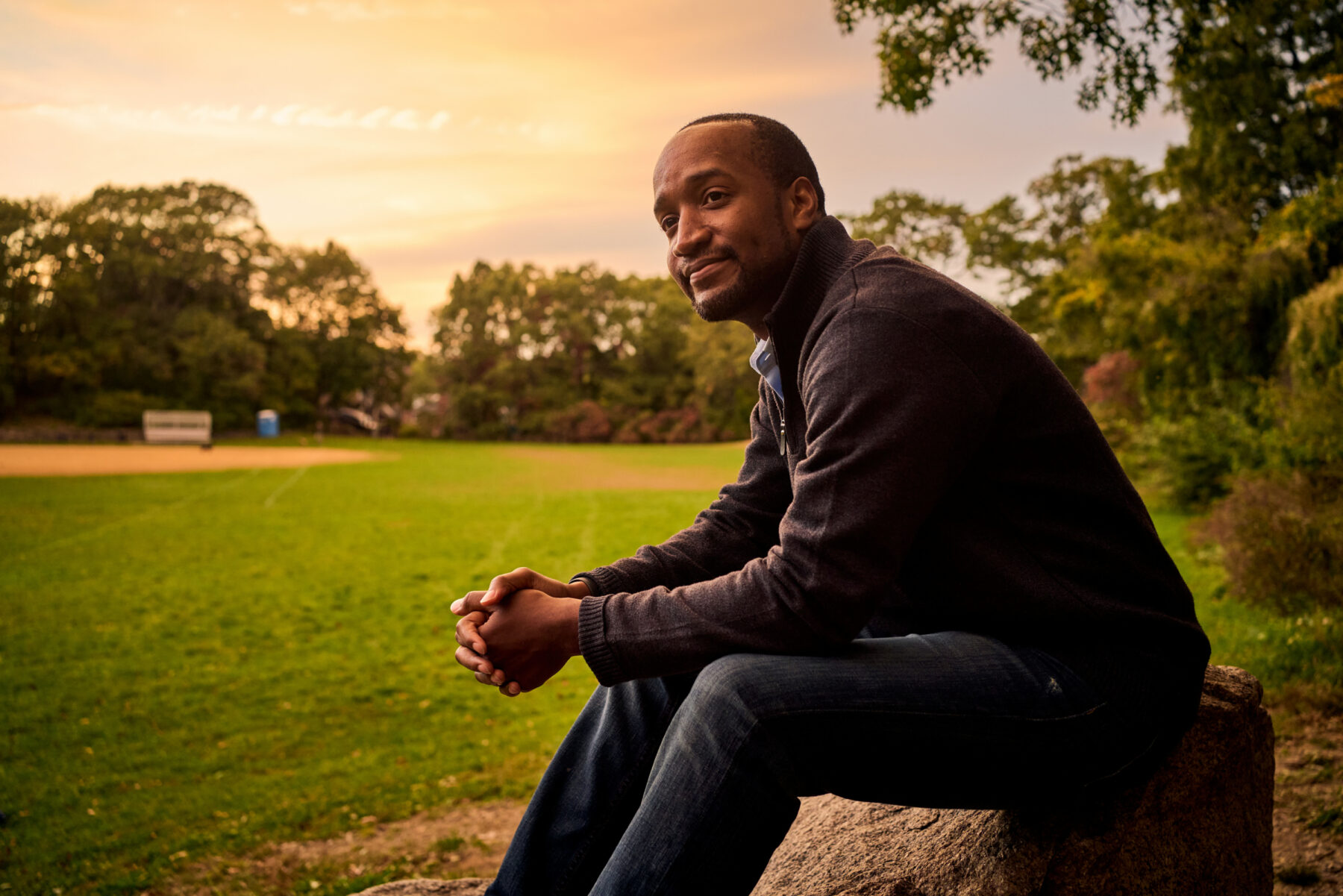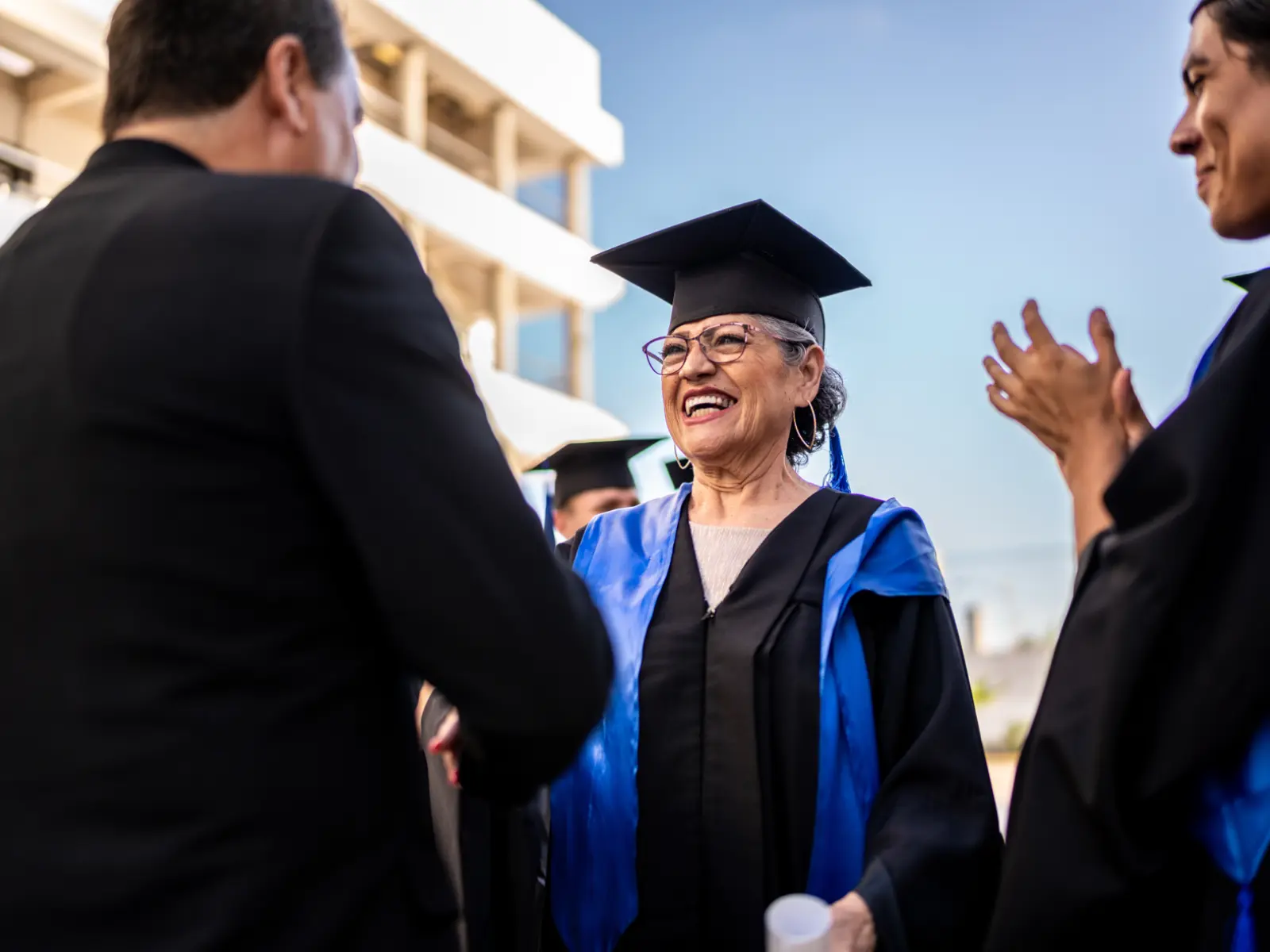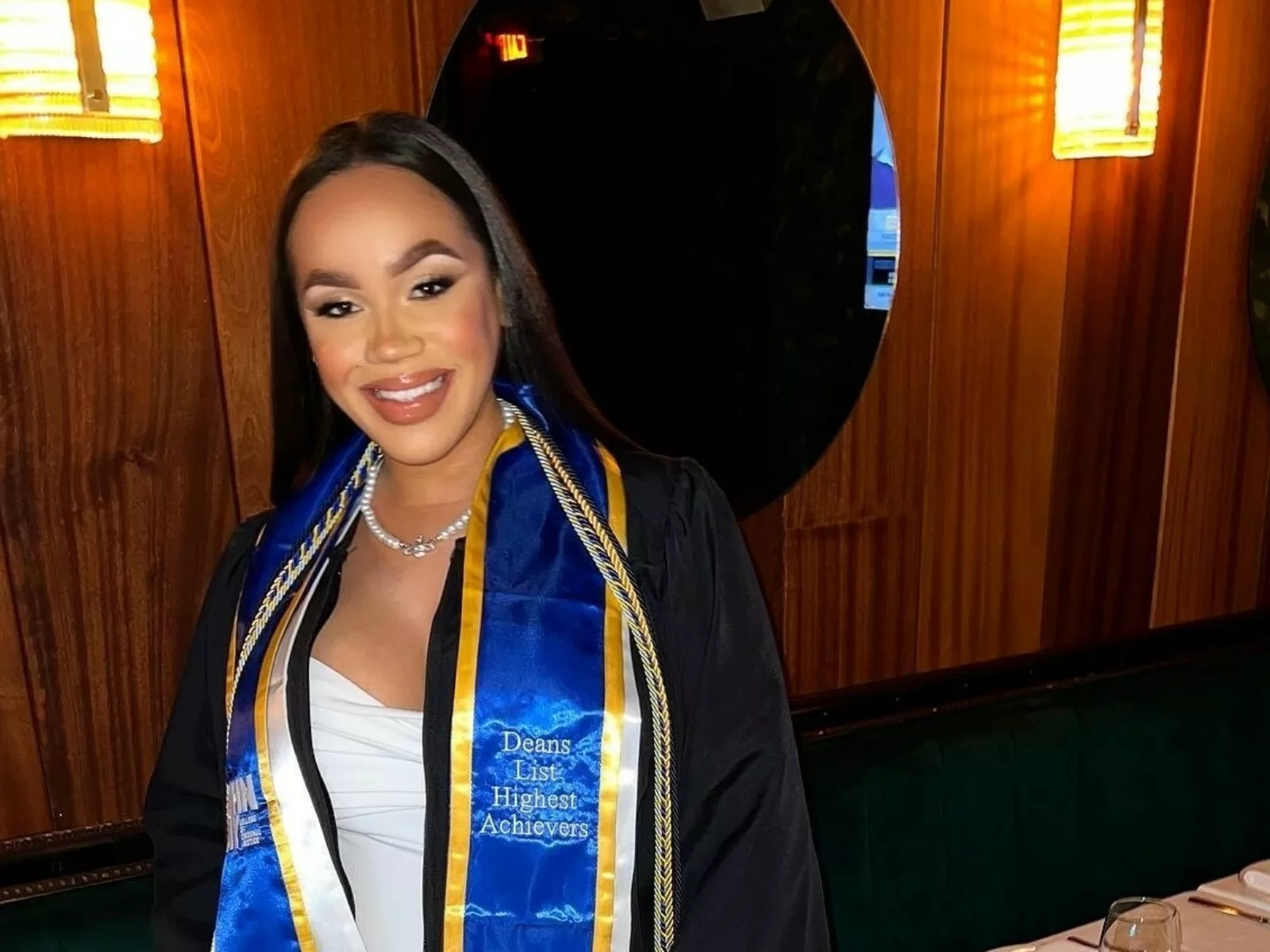Just as Rich Pierre was having his teenage “What now?” moment, Bottom Line was blowing up his phone. A high school athlete living near Boston, Pierre had spent his whole young life planning to turn pro, but as senior year loomed, that dream started to fade, and reality hit fast.
“Reality hit when I realized I was far from being drafted to the NBA or the NFL, like many young men in my community dreamed of … so what now?” he remembers thinking. “Then I had an experience where I couldn’t avoid [Bottom Line’s] phone calls, inviting me to come into their office … I just remember them having great snacks. I remember that was an incentive, as it was a great benefit to get some free food in me!”
That incentive led Pierre to hang out in Bottom Line’s Boston-area office after practice many days, and ultimately, the organization got him to focus on college applications and financial aid forms. Pierre had never seen such paperwork — his parents were both janitors and immigrants from Haiti — so he had little idea how to fill out the forms. But with help from his Bottom Line adviser, Pierre ultimately scored a scholarship to study business at Bentley University in Waltham, Massachusetts.
That was only the beginning of Bottom Line’s help. Throughout his years at Bentley, a Bottom Line advisor helped Pierre register for classes, find internships, secure additional financial aid, deal with housing issues, and yes, even sent him snacks.
“They were my second family, there’s no other way to say it,” Pierre said. “They would come to campus, or send a care package with a bunch of goodies — snacks, gloves, a scarf, a mug, or something you might need going into finals.”
A privately funded nonprofit, Bottom Line was founded more than 20 years ago near Boston to help disadvantaged high school students get into college and, crucially, get through college by supplying them with hands-on advice and help along the way. Today, its College Access and Success Programs — for high school students and those who attend a Bottom Line-affiliated college, respectively — serves 7,000 students in multiple regions across America. The organization’s motto is “Get in, graduate, and go far.” Like Pierre, many work with the same adviser from their senior year high school through college graduation and job placement.
An impact of this magnitude on bachelor’s degree receipt has never been observed before in a well-conducted study of college prep programs, making Bottom Line the first to achieve this remarkable distinction.
Bottom Line is exactly the type of program that education advocates in Washington, D.C., say the federal government should invest in. And they might soon see that happen, notes Kelly McManus, director of higher education at Arnold Ventures. Congress and the White House are currently negotiating the Build Back Better Act. The House version of the bill includes $9 billion for a new College Completion Fund that would invest in evidence-based programs that help students graduate.
Federal investments in programs like Bottom Line through the College Completion Fund would signal an important shift in federal higher education policy — not just focusing on access, but also focusing on success.
Proof That Advisers Contribute to College Success
Just-released scientific research demonstrates Bottom Line’s effectiveness. A large, ongoing randomized controlled trial comprised of more than 2,400 students at three of Bottom Line’s sites found that Bottom Line students were much more likely to earn a bachelor’s degree within five years of high school graduation compared to a control group. In fact, there was a statistically-significant 8 percentage point increase in bachelor’s degree completion for the Bottom Line group compared to the control group.
An impact of this magnitude on bachelor’s degree receipt has never been observed before in a well-conducted study of college prep programs, making Bottom Line the first to achieve this remarkable distinction.
Kim Cassel is director of Evidence-Based Policy at Arnold Ventures and has supported the study since it began. She admires the organization’s willingness to submit the program to a randomized-controlled trial.
“Many organizations have a ‘gut feeling’ that their program works. However, when programs are rigorously studied, very few produce the impacts we’re hoping for — impacts like those we’re seeing with this particular study of Bottom Line,” she said.
That’s why the results of this study are so important. Bottom Line was over-subscribed in New York, Boston, and Worcester, Massachusetts prior to the study, and rather than use a first-come, first-served approach, they worked with independent researchers to instead implement a lottery to facilitate random assignment to two groups: a treatment group that was offered Bottom Line, or a control group that was not. The researchers tracked students’ progress through college enrollment and graduation. Six years after random assignment, 55% of Bottom Line students had received a bachelor’s degree, compared to 47% of the control group.
“In this field, to get an impact of this magnitude, that’s blockbuster,” Cassel said.
‘We Wish We Didn’t Need to Exist’
Bottom Line had noted that colleges generally had a 1 to 85 ratio of adviser to students, Johnson said — a caseload that seemed to limit advisers’ ability to focus on individual students’ needs. Bottom Line attempts to step into that void.
“Like most non-profits, we wish we didn’t need to exist,” said current Bottom Line CEO Steven Colón. “What I think we do is replicate the resources that are available for students at top tier high schools and universities. Very few institutions are able to provide that.”
Greg Johnson, Bottom Line’s CEO until 2018, thinks the secret sauce is the ongoing relationship and the decisions that come out of it. He sees how crucial it is for students to make good choices as they plan for their college career — both about the money they’re going to spend and the programs they begin. “Well-timed good advice … that’s what makes a difference in anyone’s life,” Johnson said.
The research team also posits that a key component to Bottom Line’s success may come earlier in the program: Bottom Line’s assistance to students when they first choose a college, to ensure the best fit.
What makes our program unique is this combination of authentic relationship with students built on trust and a real devotion to data-informed decision making.Steven Colón Bottom Line CEO
Bottom Line advisers meet with the students starting in their senior year of high school. The areas advisers focus on include helping students choose the right colleges to apply to, completing financial aid and scholarship applications to ensure the school is affordable, and ultimately selecting the best fit.
“What makes our program unique is this combination of authentic relationship with students built on trust and a real devotion to data-informed decision making,” Colón said.
Bottom Line works with target colleges — 20 or so in each region — so they have intimate knowledge of course schedules and other quirks, but students have a wide set to choose from. In the New York area, that includes both affordable state schools like the CUNYs, and private schools that offer financial aid, like Fordham and St. John’s. If students choose to attend one of Bottom Line’s “target institutions,” they are invited to continue Bottom Line’s individualized personal, academic, and financial support services from the summer after senior year of high school until up to six years thereafter. Students can also choose to enroll in a non-Bottom Line college, a group the organization calls “Access Only,” as those students no longer participate in Bottom Line once they graduate high school.
Advisers — all paid professionals — spend a lot of time on campus understanding the ins and outs of each college for the benefit of their students.
“Training is the key,” Colón said. “Other organizations use volunteers, but our program demands folks who are rigorously trained.”
When students meet with their adviser, they get down to business. “It’s not just chit chat for an hour. Advisers develop service plans and ask things like, ‘Have you registered for classes next semester? How are your classes going, do you need to connect with a tutor?’”
Meetings are carefully planned for critical moments in the school year when students might be most at risk: before important financial aid deadlines, or around the time those 20-page papers are due. Advisers draw on years of data to optimize their scheduling.
Paying for College, and Scaling Up
Bottom Line advisers are also trained to give college applicants straight talk about affordability.
“Sometimes we communicate to students messages they don’t want to hear. That’s also unique about our program, we have a real focus on affordability,” Colón said. “We want you to go to a school that’s not just a good fit academically and culturally, but one that’s also a good fit financially, too. Sometimes it’s hard, to tell them not to automatically take the more selective school. We want them to understand the full implications and make an informed choice.”
Those hard conversations set up students for long-term success, he said. “I get excited when I see the full impact of our mission,” Colón said. “The student who not just graduated but really has a thriving career and were able to get out with minimal debt.”
Colón wants the program to expand dramatically in coming years. “I believe we have a program that has demonstrated impact, and I want to be able to find a way to bring it to as many students as possible.”
The program is free to students, but it isn’t free to operate — it costs an average of $4,000 per student to offer Bottom Line’s support from high school to bachelor’s degree.
Average per student cost for Bottom Line’s support from high school to bachelor’s degree
Key to expanding the program is convincing other funders and educational organizations that it works, which is why Bottom Line partnered with the team at Arnold Ventures seven years ago to launch a randomized controlled trial that would test its long-term effectiveness. Johnson agreed to submit his program to the rigor of a scientific study conducted by outside researchers — and accept whatever the results would be — because he wanted to prove Bottom Line was worth the money.
“We made a heavy investment in full-time staff, working one-on-one with students, with very low ratios, and we kept having to defend that,” he said. “So we wanted some demonstrable proof as to why we needed those ratios.” As the study shows, the close advising leads to higher college graduation rates.

Rich Pierre thinks that kind of patient help from Bottom Line was all that stood between him and a very different future.
“Without Bottom Line, I feel like I would have been scrambling last-minute of senior year trying to figure out what I was going to do with my life after high school. I’m just thankful I was lucky enough to go through the Bottom Line program,” he said.
“We put all this effort into helping kids into college,” said Johnson. “All we’re saying is, let’s invest a little more than $1,000 a year to make sure those students actually graduate.”












